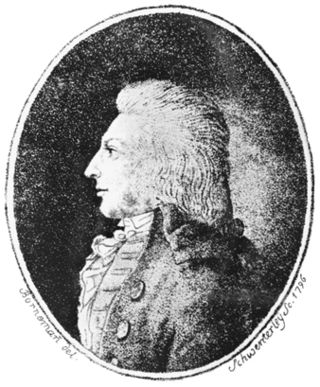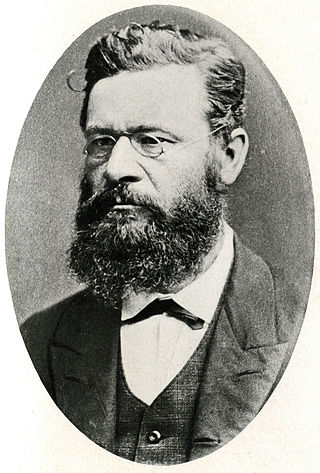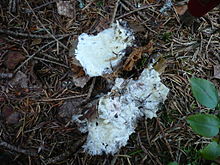
The walleye, also called the yellow pike or yellow pikeperch or yellow pickerel, is a freshwater perciform fish native to most of Canada and to the Northern United States. It is a North American close relative of the European zander, also known as the pikeperch. The walleye is sometimes called the yellow walleye to distinguish it from the blue walleye, which is a color morph that was once found in the southern Ontario and Quebec regions, but is now presumed extinct. However, recent genetic analysis of a preserved (frozen) 'blue walleye' sample suggests that the blue and yellow walleye were simply phenotypes within the same species and do not merit separate taxonomic classification.

Christiaan Hendrik Persoon was a South African mycologist who made additions to Linnaeus' mushroom taxonomy.

The genus Amanita contains about 600 species of agarics, including some of the most toxic known mushrooms found worldwide, as well as some well-regarded edible species. The genus is responsible for approximately 95% of fatalities resulting from mushroom poisoning, with the death cap accounting for about 50% on its own. The most potent toxin present in these mushrooms is α-Amanitin.

The blue walleye, also called the blue pike, was a unique color morph of walleye which was endemic to the Great Lakes of North America. Morphometric studies led biologists to classify the blue walleye as a separate species in 1926, although it was later downgraded to a subspecies. Listed as an endangered species by the United States in 1967, it was declared extinct in 1983.

Russula is a very large genus composed of around 750 worldwide species of ectomycorrhizal mushrooms. They are typically common, fairly large, and brightly colored – making them one of the most recognizable genera among mycologists and mushroom collectors. Their distinguishing characteristics include usually brightly coloured caps, a white to dark yellow spore print, brittle, attached gills, an absence of latex, and absence of partial veil or volva tissue on the stem. Microscopically, the genus is characterised by the amyloid ornamented spores and flesh (trama) composed of spherocysts. Members of the related genus Lactarius have similar characteristics but emit a milky latex when their gills are broken. The genus was described by Christian Hendrik Persoon in 1796.

Coprinopsis is a genus of mushrooms in the family Psathyrellaceae. Coprinopsis was split out of the genus Coprinus based on molecular data. The species Coprinopsis cinerea is a model organism for mushroom-forming basidiomycota, and its genome has recently been sequenced completely.

Petter Adolf Karsten was a Finnish mycologist, the foremost expert on the fungi of Finland in his day, and known in consequence as the "father of Finnish mycology".

Ganoderma is a genus of polypore fungi in the family Ganodermataceae that includes about 80 species, many from tropical regions. They have a high genetic diversity and are used in traditional Asian medicines. Ganoderma can be differentiated from other polypores because they have a double-walled basidiospore. They may be called shelf mushrooms or bracket fungi.

Phanerochaete is a genus of crust fungi in the family Phanerochaetaceae.

Cortinarius caperatus is an edible mushroom of the genus Cortinarius found in northern regions of Europe and North America. It was known as Rozites caperata for many years before genetic studies revealed that it belonged to the genus Cortinarius. The fruit bodies appear in autumn in coniferous and beech woods as well as heathlands in late summer and autumn. The ochre-coloured cap is up to 10 cm (4 in) across and has a fibrous surface. The clay-colored gills are attached to the stipe under the cap, and the stipe is whitish with a whitish ring. The Latin specific name, caperatus, means wrinkled, and refers to the distinctive texture of the cap. The flesh has a mild smell and flavor.

Onnia is a genus of fungi in the family Hymenochaetaceae. The widely distributed genus contains five species.

Peniophora is a genus of fungi which are plant pathogens. Members of the genus belong to the class Agaricomycetes, order Russulales, and family Peniophoraceae. The genus is widespread, and contains 62 species. The species of Peniophora are resupinate, or crust-like, and are described as corticioid. A number of its members are parasitised by other fungi. For example, Tremella mesenterica is a parasite to several species of Peniophora.
Coprinellus deliquescens is the type species of mushrooms in its genus and belongs to the family Psathyrellaceae. It was first described as Agaricus deliquescens in 1790 by French mycologist Bulliard before being transferred to the genus Coprinellus in 1879 by Petter Karsten.

Calicium is a genus of leprose lichens. It is in the family Caliciaceae, and has 40 species.

Gymnopilus subtropicus is a species of agaric fungus in the family Hymenogastraceae.

Physisporinus is a genus of fungi in the family Meripilaceae. The genus was circumscribed by Finish mycologist Petter Karsten in 1889.

Strobilurus tenacellus, commonly known as the pinecone cap, is a species of agaric fungus in the family Physalacriaceae. It is found in Asia and Europe, where it grows on the fallen cones of pine and spruce trees. The fruit bodies (mushrooms) are small, with convex to flat, reddish to brownish caps up to 15 mm (0.6 in) in diameter, set atop thin cylindrical stems up to 4–7.5 cm (1.6–3.0 in) long with a rooting base. A characteristic microscopic feature of the mushroom is the sharp, thin-walled cystidia found on the stipe, gills, and cap. The mushrooms, sometimes described as edible, are too small to be of culinary interest. The fungus releases compounds called strobilurins that suppress the growth and development of other fungi. Derivatives of these compounds are used as an important class of agricultural fungicides.

Geoglossum is a genus of fungi in the family Geoglossaceae. They are commonly called earth tongues. The type species is Geoglossum glabrum. Geoglossum species are distinguished from the related genus Trichoglossum by the lack of setae on the spore bearing surface. Geoglossum species are characterized by dark, club-shaped, terrestrial ascocarps with a fertile hymenium continuing downward from the apex of the ascocarp along the stipe, eventually intergrading with a sterile stipe. The ascospores of Geoglossum range from translucent to dark brown, and are fusiform, and multiseptate. Identification of species is based on the gross morphology of the ascocarp, color and septation of the ascospores, and shape and ornamentation of the paraphyses.

Bjerkandera fumosa is a species of poroid fungus in the family Meruliaceae.

Peniophorella is a genus of fungus belonging to the Agaricomycetes class; it has not been assigned to an order or a family. It contains 27 species. The genus was documented in 1889 by Finnish mycologist Petter Adolf Karsten.



















